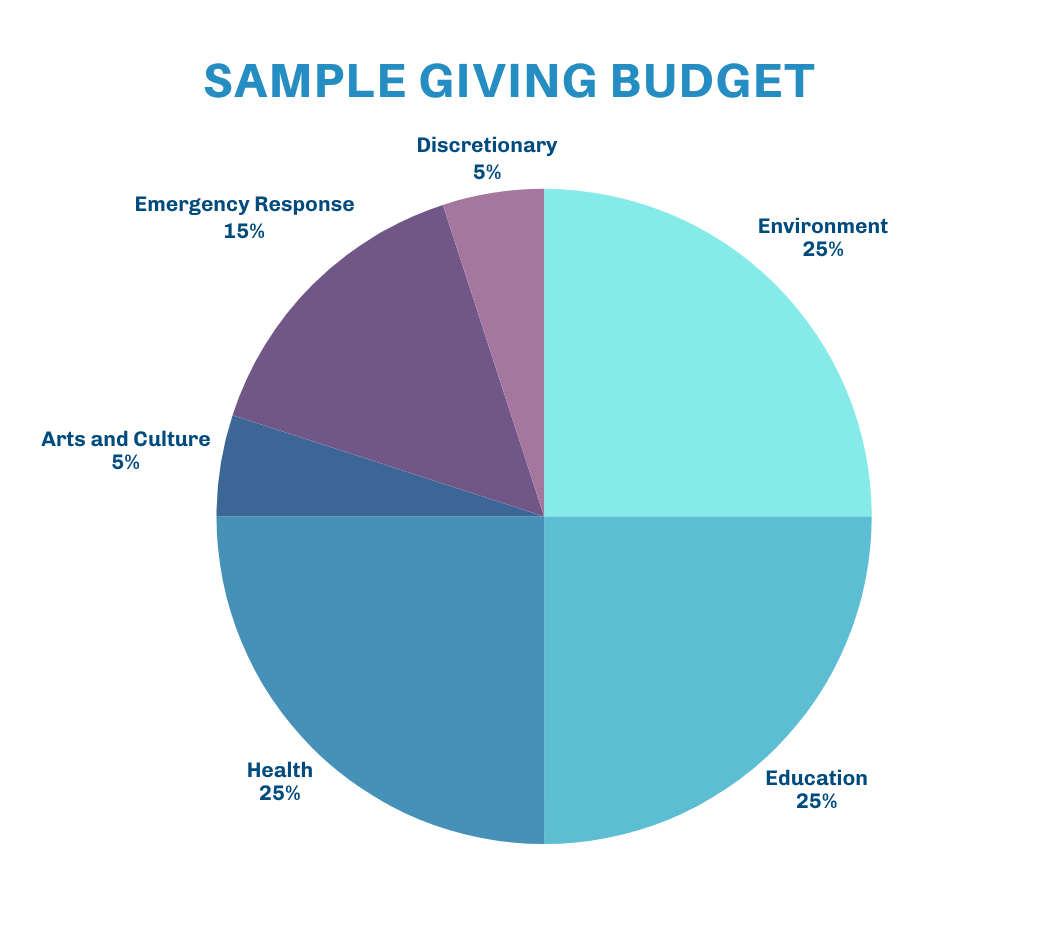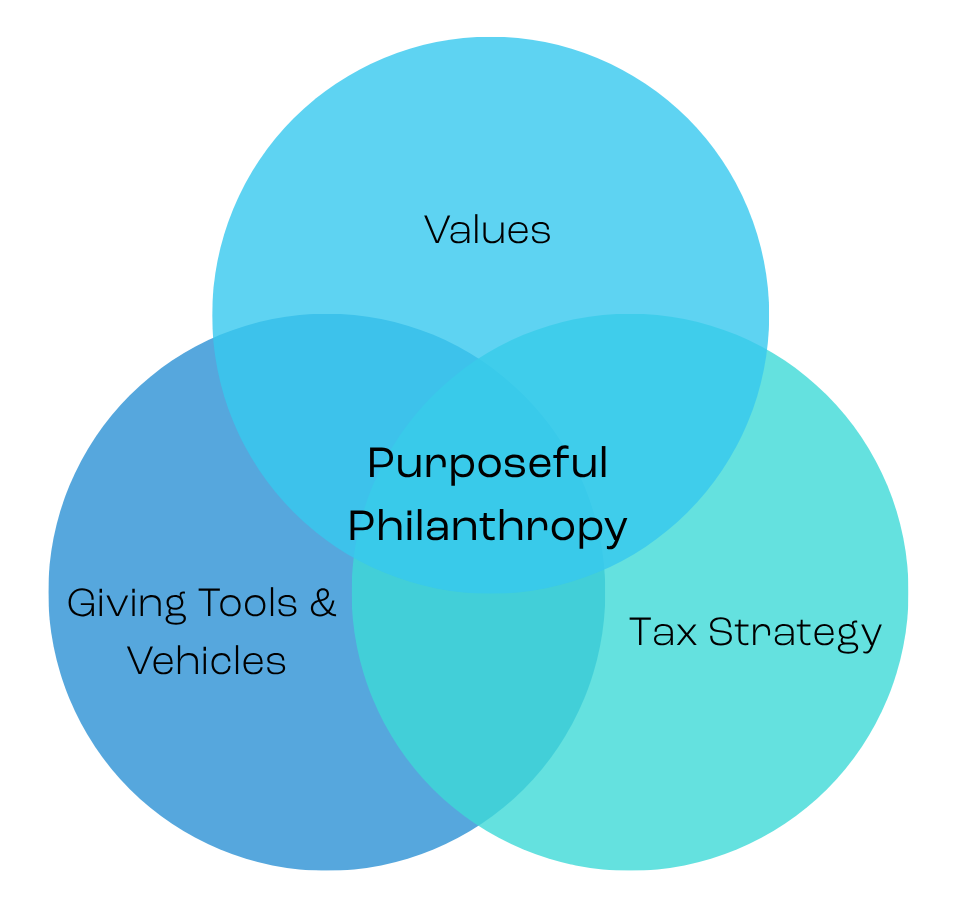
Mid-Year Philanthropic Planning: Maximizing Your Impact
Mid-Year Philanthropic Planning: Maximizing Your Impact
As we pass the mid-year mark, it’s a natural time to revisit the goals and intentions you may have set at the start of the year. That reflection can extend to your charitable giving. Whether you have already made a few contributions or have been waiting until the end of the year, reviewing your impact goals can help you finish the year with purpose.
In addition to conducting your own mid-year giving audit, the first half of the year has brought several important policy changes, including provisions in “The One Big Beautiful Bill” (OBBB), that may influence your charitable and tax planning strategies for 2025 and beyond. This moment is a good opportunity to be strategic, recenter around your values and causes that matter to you, and to be proactive with your philanthropy.
Mid-Year Giving Audit: Are you on track?
Whether you give through a charitable vehicle such as a donor-advised fund (DAF), a private foundation, or on a more ad hoc basis, a mid-year check-in can help assess where you are in your giving. A few questions to consider:

- What causes or organizations have you supported so far this year?
- Do you have a “giving budget”? If so, how much remains?
- Are there emerging needs or timely causes that you want to respond to before year-end?
- Are your donations advancing the values and impact areas that matter most to you?
This is also a good chance to step back and ask: What kind of difference do I want to make this year?
Policy Watch: What Donors and Advisors are Paying Attention To
In the last month, you likely have read all about the myriad of policy changes that “The One Big Beautiful Bill Act” (OBBB) enacted. Several provisions in the sweeping tax package have implications for charitable giving:
- New deduction for non-itemizers: Beginning in 2026, all households (itemizers and non-itemizers) will be able to deduct charitable gifts up to $1,000 for individuals or $2,000 for joint filers to qualifying nonprofit organizations. Note, donations to DAFs or private non-operating foundations are excluded.
- Under the 2020 CARES Act, there was a similar provision allowing a $300 universal charitable deduction. According to the Fundraising Effectiveness Project, nonprofit organizations reported that there was a 28% increase in individual donations for exactly $300 on December 31, 2020. The OBBB’s move to increase deduction caps may encourage more charitable giving.
- Limits on high-income donor deductions: Also beginning in 2026, the tax benefit of itemized charitable deductions will be capped at 35%, even for those in the top 37% tax bracket. Deductions will only apply to contributions exceeding 0.5% of adjusted gross income (AGI) and corporations will only be able to deduct charitable contributions that exceed 1% of their taxable income.
- Adjusted gross income for cash contributions extended: The new law permanently extends the ability to deduct up to 60% of AGI for cash gifts to 501c3 public charities.
- Donating to universities may shift: The new tiered tax on university endowment investment earnings was introduced. This includes rates as high as 8% for institutions with more than $2 million in endowment assets per student, affecting 56 universities such as Harvard. This may prompt donors to consider giving unrestricted gifts to their alma mater, which helps universities have greater flexibility to respond to evolving needs.
While several proposed reforms affecting foundations and DAFs did not make it into the final bill, new regulations around distribution requirements and payout timelines are still under consideration. We will continue to watch these closely and report on important outcomes.
Mid-Year Giving Moves
While charitable giving is most often driven by values and the desire to make a difference in a particular area, there are also strategic considerations that may help to maximize your impact this year.
- Depending on individual tax situations, accelerating giving in 2025 (sometimes referred to as “bunching”) by making a bigger contribution this year rather than waiting until next year may help to take advantage of deductions under current rules.
- For those with highly appreciated securities or concentrated positions, donating securities can be a tax-efficient way to give. These gifts are generally deductible up to 30% of AGI and any unused deductions can be carried forward for up to five years.
- Individuals over the age of 70½ with individual retirement accounts (IRAs) may be eligible to make Qualified Charitable Distributions (QCDs). QCDs are distributed directly from your IRA to a qualified charity. It can be another useful tool for charitable giving which also helps to fulfill your required minimum distributions (RMDs) and are excluded from your gross income.
This year, many nonprofit organizations are facing funding constraints, making your support more important than ever. Individual giving still comprises about two-thirds of all charitable giving in the U.S. and continues to play a critical role in supporting the causes that impact our communities.
There are ways you can help support your favorite nonprofit organizations beyond just the check. Even if you do not increase your giving, to help nonprofits with their cash flow and planning consider giving the donations earlier, rather than the year-end rush. Additionally, offering unrestricted/general operating support, rather than limiting the purpose of the funds, provides flexibility and allows nonprofits to use funds where it is needed most. You may also try asking your favorite organizations what is most helpful right now. Beyond financial contributions, your time, voice and connections can also make a big difference.
Your Philanthropic Path Ahead

While you don’t need to overhaul your giving plans for the year amidst many economic, social and regulatory changes, it is an opportunity to purposefully re-align your plans to maximize the impact of your giving. Fire Capital supports our clients with their philanthropic strategy, planning, and research on charitable organizations that align with what our client’s care about most. Of course, everyone’s circumstances will affect what strategies make the most sense to them, so it is important to engage with a tax professional or your financial advisor to align with your values and goals so you can give with confidence.
SOURCES
https://cof.org/page/one-big-beautiful-bill-impact-philanthropy
https://ssir.org/articles/entry/eight_myths_of_us_philanthropy
The information in this report was prepared by Fire Capital Management. Any views, ideas or forecasts expressed in this report are solely the opinion of Fire Capital Management, unless specifically stated otherwise. The information, data, and statements of fact as of the date of this report are for general purposes only and are believed to be accurate from reliable sources, but no representation or guarantee is made as to their completeness or accuracy. Market conditions can change very quickly. Fire Capital Management reserves the right to alter opinions and/or forecasts as of the date of this report without notice.
All investments involve risk and possible loss of principal. There is no assurance that any intended results and/or hypothetical projections will be achieved or that any forecasts expressed will be realized. The information in this report does guarantee future performance of any security, product, or market. Fire Capital Management does not accept any liability for any loss arising from the use of information or opinions stated in this report.
The information in this report may not to be suitable or useful to all investors. Every individual has unique circumstances, risk tolerance, financial goals, investment objectives, and investment constraints. This report and its contents should not be used as the sole basis for any investment decision. Fire Capital Management is a boutique investment management company and operates as a Registered Investment Advisor (RIA). Additional information about the firm and its processes can be found in the company ADV or on the company website (firecapitalmanagement.com).
CFA® and Chartered Financial Analyst® are trademarks owned by CFA institute.



